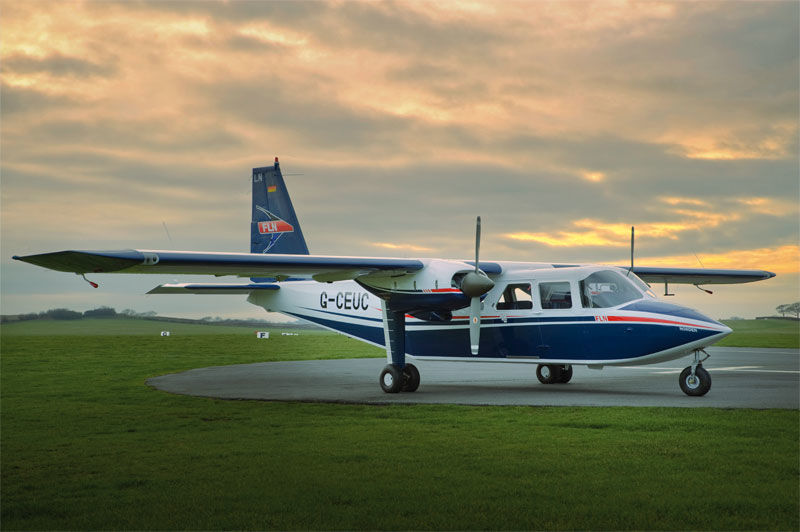
Up in the remote northeast of Scotland, residents of the Orkney Islands use small island-hopping aircraft to commute around the archipelago. The longest flight in the area is 15 minutes, traveling 33 miles from the city of Kirkwall to the island of North Ronaldsay. The shortest flight takes an average of 80 seconds to travel 1.7 miles between the islands of Westray and Papa Westray. That flight holds the Guinness World Record as the shortest commercial flight route in the world.
Now, Scottish airline Loganair and aircraft modifier Cranfield Aerospace Solutions are working together in the hopes of turning the Orkney Islands' 10 inter-island routes all-electric, perhaps even establishing the world's first all-electric commercial flight routes.Electric planes are still something of a pipe-dream for environmentalists and technologists. Jet fuel is extremely energy-dense compared to batteries, and flight requires a lot of energy at little additional weight. Electric flight startups are either developing hybrid battery/jet-fuel planes or banking on the continuous improvement of batteries to make their visions viable years down the road. While the most optimistic see the advent of lithium-air batteries and engine efficiency improvement as a path to commercial electric flight, others have focused on decarbonizing jet-fuel synthesis.
But flights as short as those in the Orkney Islands don't need the same kind of energy efficiency as long-haul flights do. Cranfield told Scotland's Press and Journal that it believed it could simply modify the eight-seater Britten Norman Islander planes that Loganair already uses among the islands instead of designing an electric plane from scratch. Paul Hutton, CEO of Cranfield, said that he believed it would only take £10 million to create and safety test these specialty-use battery aircraft. Cranfield is seeking a grant from the UK government to support the project.
Loganair CEO Jonathan Hinkles told the Press and Journal that a three-year timeline is possible if grant funding is found for the project. That would make 2021 the earliest that all-electric commercial flights could be put into service.
Hutton told the BBC that the added benefit of electrifying the Orkney Islands flights is that there's an abundance of renewable energy, especially wind energy, already on the grid in the area. Charging a battery between flights is easily the greener option compared to burning jet fuel.
Local council likes this plan
Loganair operates the inter-islands flights on behalf of the Orkney Islands Council, which subsidizes transportation between the sparsely populated islands. Orkney Islands Council Leader James Stockan told the BBC that the council supports electrifying its inter-islands flights if they can be proven safe, because it could help save money on expensive jet fuel. "This is a community with a strong track record when it comes to innovation, and I am pleased that this pioneering project looks set to be developed in Orkney," Stockan said.
Though replacing the jet fuel burned by small island-hopping planes in a remote part of the world may seem like a drop in the bucket in efforts to reduce emissions, starting small is often a path to thinking big. If the shortest flights in the world can be flown successfully, gradually longer and longer commercial electric flights may someday be attempted.
reader comments
210